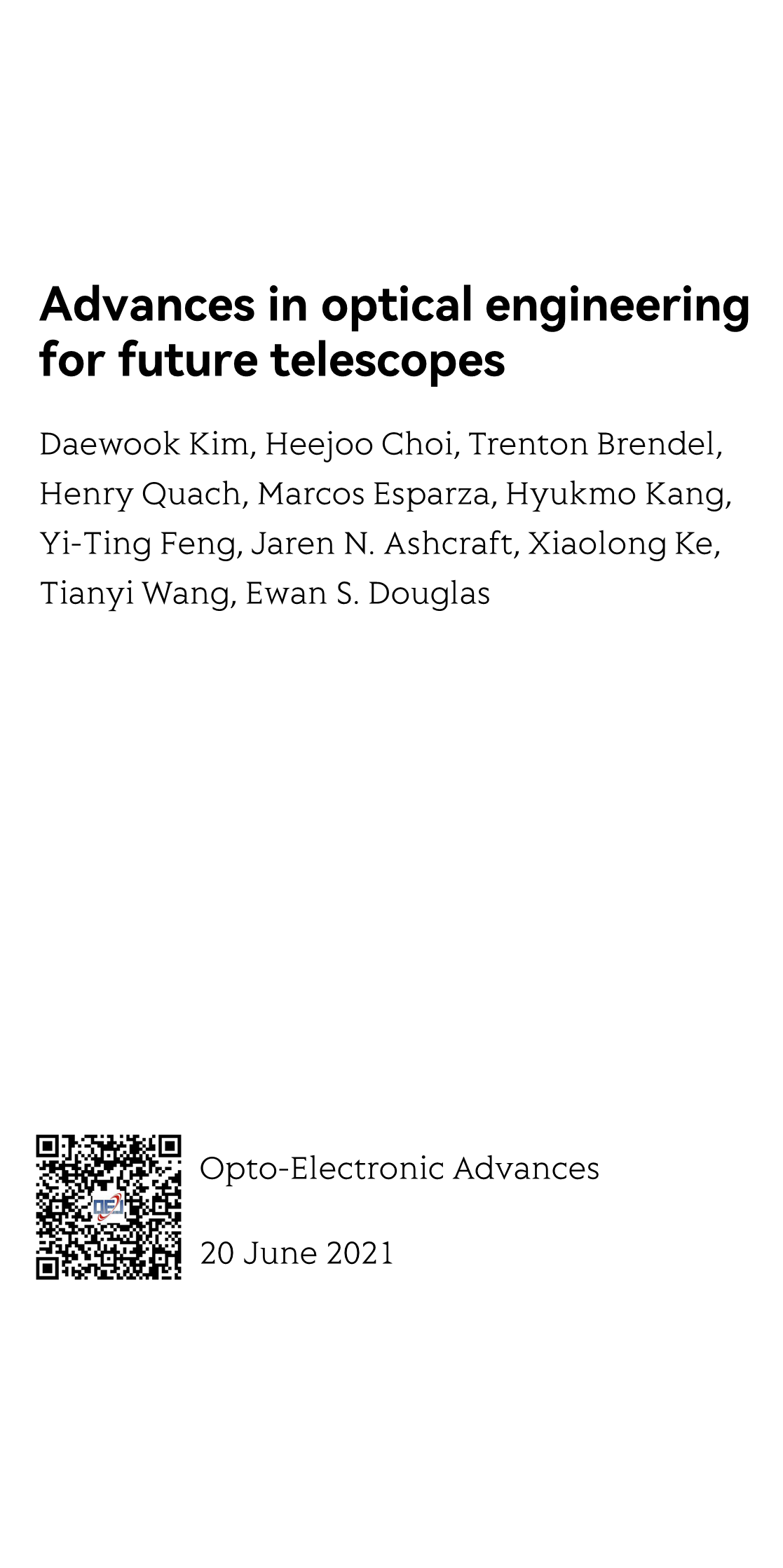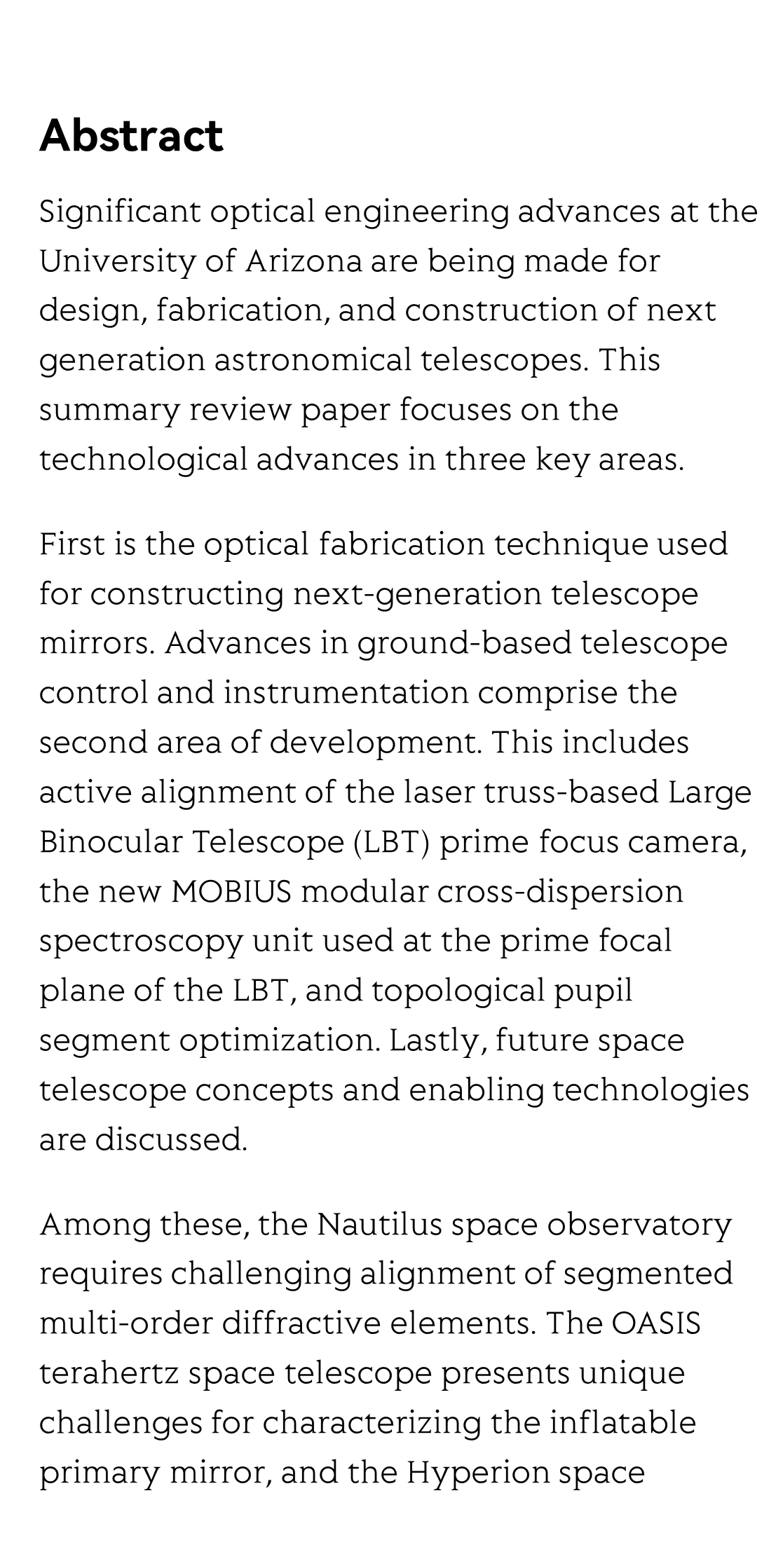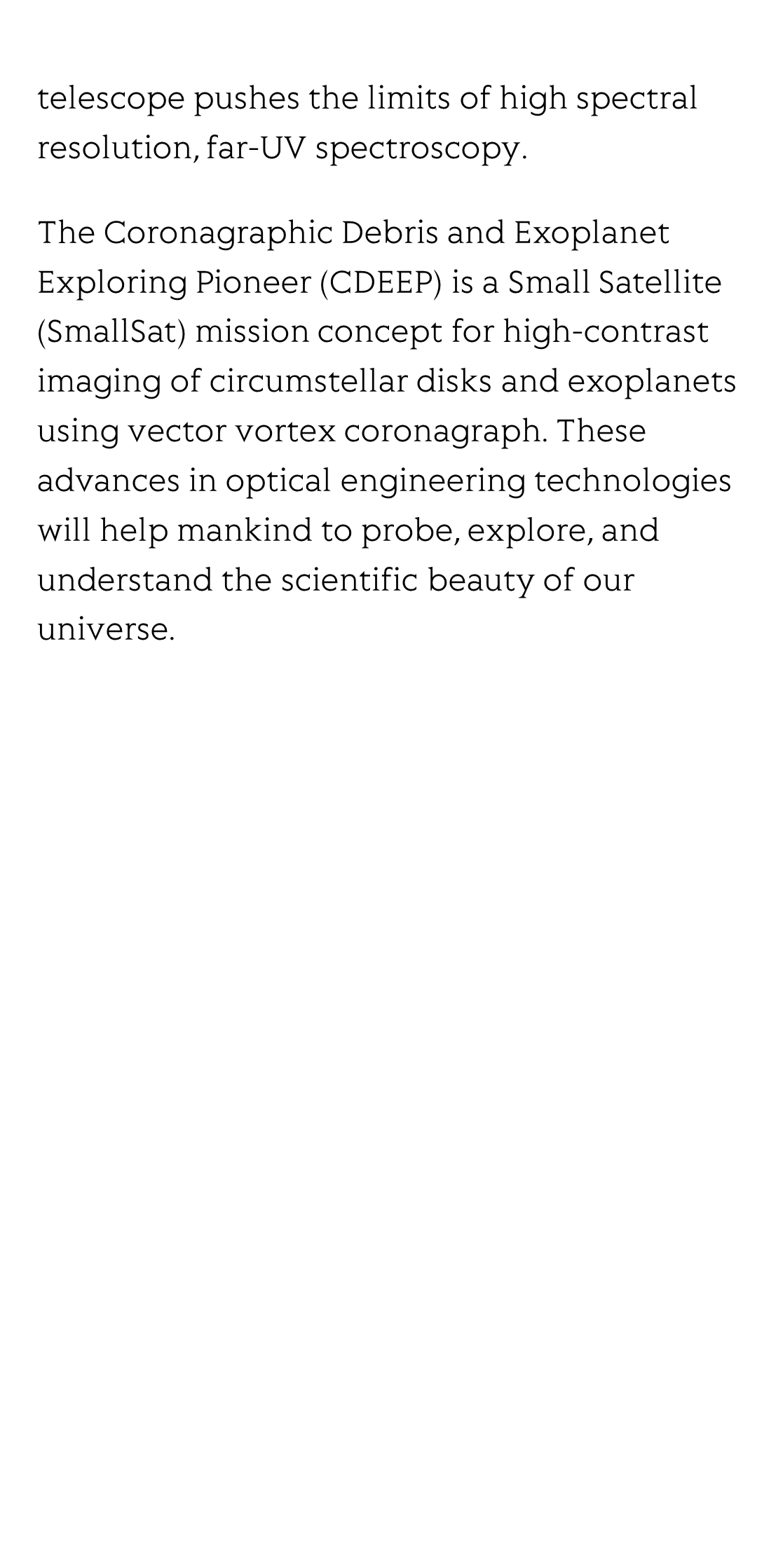(Peer-Reviewed) Advances in optical engineering for future telescopes
Daewook Kim ¹ ² ³, Heejoo Choi ¹ ³, Trenton Brendel ¹, Henry Quach ¹, Marcos Esparza ¹, Hyukmo Kang ¹, Yi-Ting Feng ¹, Jaren N. Ashcraft ¹, Xiaolong Ke 柯晓龙 ⁴, Tianyi Wang ⁵, Ewan S. Douglas ²
¹ Wyant College of Optical Sciences, University of Arizona, 1630 E. University Blvd., Tucson, AZ 85721, USA
² Department of Astronomy and Steward Observatory, University of Arizona, 933 N. Cherry Ave., Tucson, AZ 85721, USA
³ Large Binocular Telescope Observatory, University of Arizona, 933 N. Cherry Ave., Tucson, AZ 85721, USA
⁴ School of Mechanical and Automotive Engineering, Xiamen University of Technology, Xiamen 361024, China
中国 厦门 厦门理工学院机械与汽车工程学院
⁵ National Synchrotron Light Source II (NSLS-II), Brookhaven National Laboratory, PO Box 5000, Upton, New York 11973, USA
Opto-Electronic Advances, 2021-06-20
Abstract
Significant optical engineering advances at the University of Arizona are being made for design, fabrication, and construction of next generation astronomical telescopes. This summary review paper focuses on the technological advances in three key areas.
First is the optical fabrication technique used for constructing next-generation telescope mirrors. Advances in ground-based telescope control and instrumentation comprise the second area of development. This includes active alignment of the laser truss-based Large Binocular Telescope (LBT) prime focus camera, the new MOBIUS modular cross-dispersion spectroscopy unit used at the prime focal plane of the LBT, and topological pupil segment optimization. Lastly, future space telescope concepts and enabling technologies are discussed.
Among these, the Nautilus space observatory requires challenging alignment of segmented multi-order diffractive elements. The OASIS terahertz space telescope presents unique challenges for characterizing the inflatable primary mirror, and the Hyperion space telescope pushes the limits of high spectral resolution, far-UV spectroscopy.
The Coronagraphic Debris and Exoplanet Exploring Pioneer (CDEEP) is a Small Satellite (SmallSat) mission concept for high-contrast imaging of circumstellar disks and exoplanets using vector vortex coronagraph. These advances in optical engineering technologies will help mankind to probe, explore, and understand the scientific beauty of our universe.
Flicker minimization in power-saving displays enabled by measurement of difference in flexoelectric coefficients and displacement-current in positive dielectric anisotropy liquid crystals
Junho Jung, HaYoung Jung, GyuRi Choi, HanByeol Park, Sun-Mi Park, Ki-Sun Kwon, Heui-Seok Jin, Dong-Jin Lee, Hoon Jeong, JeongKi Park, Byeong Koo Kim, Seung Hee Lee, MinSu Kim
Opto-Electronic Advances
2025-09-25
Dual-frequency angular-multiplexed fringe projection profilometry with deep learning: breaking hardware limits for ultra-high-speed 3D imaging
Wenwu Chen, Yifan Liu, Shijie Feng, Wei Yin, Jiaming Qian, Yixuan Li, Hang Zhang, Maciej Trusiak, Malgorzata Kujawinska, Qian Chen, Chao Zuo
Opto-Electronic Advances
2025-09-25







